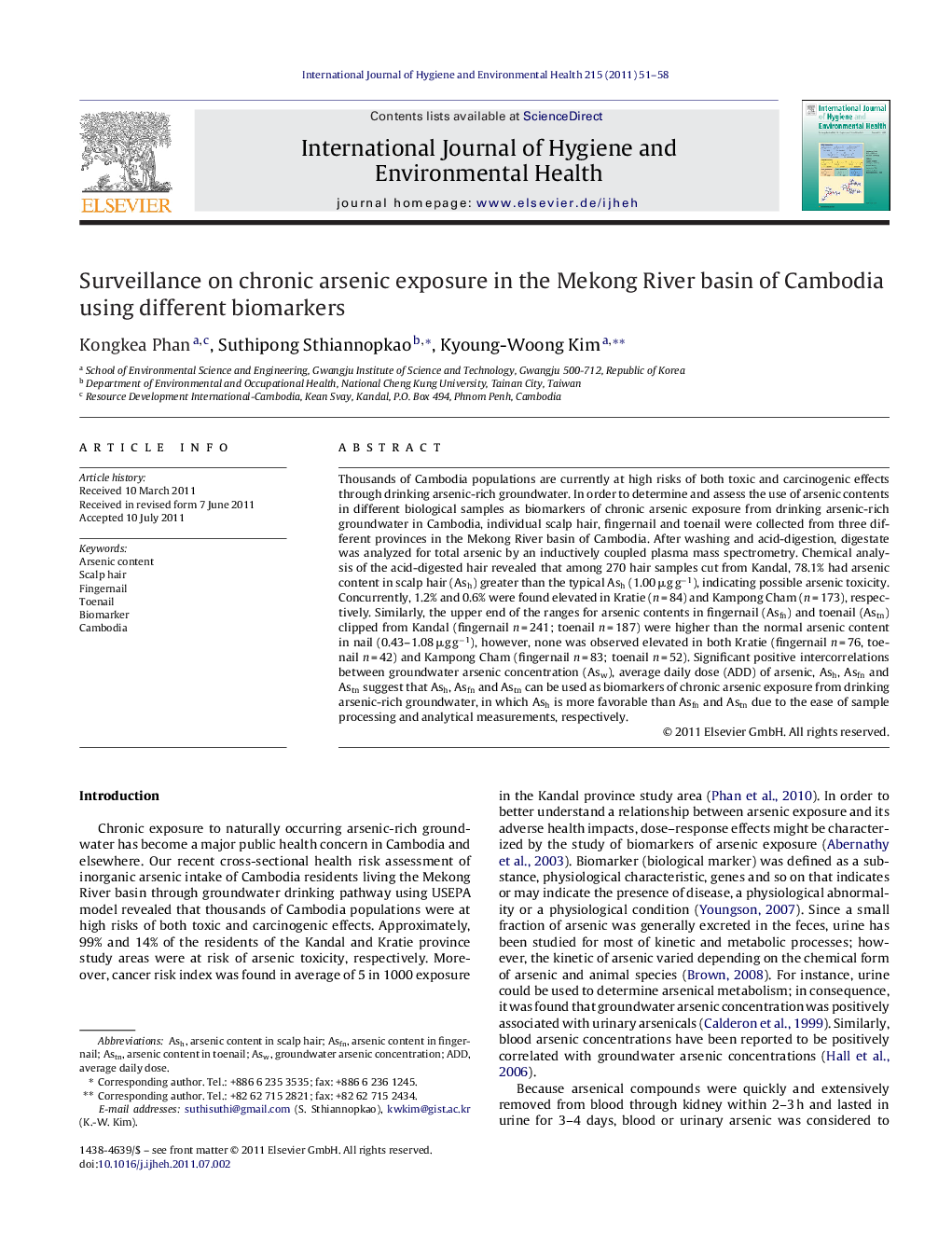| کد مقاله | کد نشریه | سال انتشار | مقاله انگلیسی | نسخه تمام متن |
|---|---|---|---|---|
| 2588868 | 1561911 | 2011 | 8 صفحه PDF | دانلود رایگان |

Thousands of Cambodia populations are currently at high risks of both toxic and carcinogenic effects through drinking arsenic-rich groundwater. In order to determine and assess the use of arsenic contents in different biological samples as biomarkers of chronic arsenic exposure from drinking arsenic-rich groundwater in Cambodia, individual scalp hair, fingernail and toenail were collected from three different provinces in the Mekong River basin of Cambodia. After washing and acid-digestion, digestate was analyzed for total arsenic by an inductively coupled plasma mass spectrometry. Chemical analysis of the acid-digested hair revealed that among 270 hair samples cut from Kandal, 78.1% had arsenic content in scalp hair (Ash) greater than the typical Ash (1.00 μg g−1), indicating possible arsenic toxicity. Concurrently, 1.2% and 0.6% were found elevated in Kratie (n = 84) and Kampong Cham (n = 173), respectively. Similarly, the upper end of the ranges for arsenic contents in fingernail (Asfn) and toenail (Astn) clipped from Kandal (fingernail n = 241; toenail n = 187) were higher than the normal arsenic content in nail (0.43–1.08 μg g−1), however, none was observed elevated in both Kratie (fingernail n = 76, toenail n = 42) and Kampong Cham (fingernail n = 83; toenail n = 52). Significant positive intercorrelations between groundwater arsenic concentration (Asw), average daily dose (ADD) of arsenic, Ash, Asfn and Astn suggest that Ash, Asfn and Astn can be used as biomarkers of chronic arsenic exposure from drinking arsenic-rich groundwater, in which Ash is more favorable than Asfn and Astn due to the ease of sample processing and analytical measurements, respectively.
Journal: International Journal of Hygiene and Environmental Health - Volume 215, Issue 1, December 2011, Pages 51–58